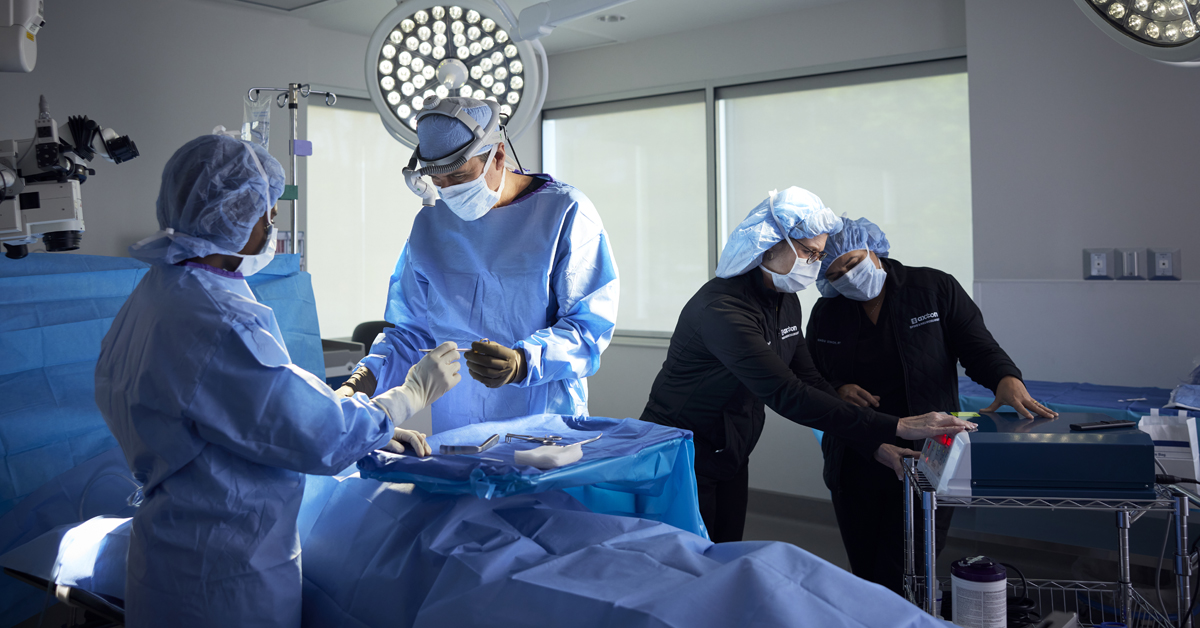Laminectomy Surgery: Reducing Pain from Spinal Stenosis

Spinal stenosis refers to a condition in the back that can lead to discomfort, numbness, or tingling sensations either in the back itself or radiating down the legs. This condition can interfere with daily activities and keep you from doing the things you love most.
Fortunately, there are several effective treatments available, including laminectomy surgery.
What is Spinal Stenosis?
Spinal stenosis refers to the narrowing of either the canal or the spaces between the vertebrae responsible for allowing spinal nerves to pass through. This narrowing is typically caused by arthritis or injury.
Bone spurs can develop on the vertebral bones, which can put pressure on either the cord itself or the nerves that branch out from it. Also, the discs between the vertebrae can shrink, reducing the space between them and compressing the nerves passing through.
What are the Symptoms of Spinal Stenosis?
Spinal stenosis does not always have noticeable symptoms. However, when they occur, common symptoms include pain, tingling sensations, or numbness that radiates down both legs. In more severe cases, you may experience weakness in your legs or difficulties controlling bowel movements and bladder functions.
Symptoms related to stenosis tend to worsen when you are walking or standing upright, and they often improve when sitting down or bending forward at the waist.
How is Spinal Stenosis Diagnosed?
Imaging tests like X-rays, MRI, or CT scans can provide insight into what’s happening inside the back. These tests help identify any bone spurs or other changes that occur with stenosis.
Doctors may sometimes recommend nerve conduction studies that assess how well nerve signals reach the muscles.
Once spinal stenosis is diagnosed, several treatment options may be explored. These may include painkillers for spinal stenosis, physical therapy, steroid injections, or even surgery.
What is Laminectomy Surgery?
Imagine your spine’s vertebrae as a stack of rings. On the side of each ring, there are bony plates called laminae. With spinal stenosis, these laminae can cause narrowing of the canal, resulting in symptoms of spinal stenosis.
A laminectomy is a procedure performed by a neurosurgeon to remove part or all of the lamina. Its purpose is to create space within the canal and relieve pressure on the spinal cord and nerve roots caused by spinal stenosis.
The surgeon makes an incision in your back above the damaged vertebrae and moves the muscles away from your spine. They may also remove any bone spurs present. The surgeon’s goal is to remove as little lamina as possible using small instruments.
The incision size may vary depending on your condition and body size. Minimally invasive operations often employ smaller incisions than open procedures.
Typically, this procedure is considered when other medical treatments have been attempted but were ineffective. It may also be recommended when spinal stenosis is causing major nerve problems, like loss of bladder control.
Will Laminectomy Surgery Help My Back Pain?
If you’ve been diagnosed with spinal stenosis and are wondering if laminectomy surgery will help, the first step is to schedule a consultation with a neurosurgeon. They will review your medical history, conduct an examination and diagnostic tests, and discuss your treatment options.
Persistent back pain or symptoms can be helped. Schedule an appointment today with one of our spine experts and get your life back!

